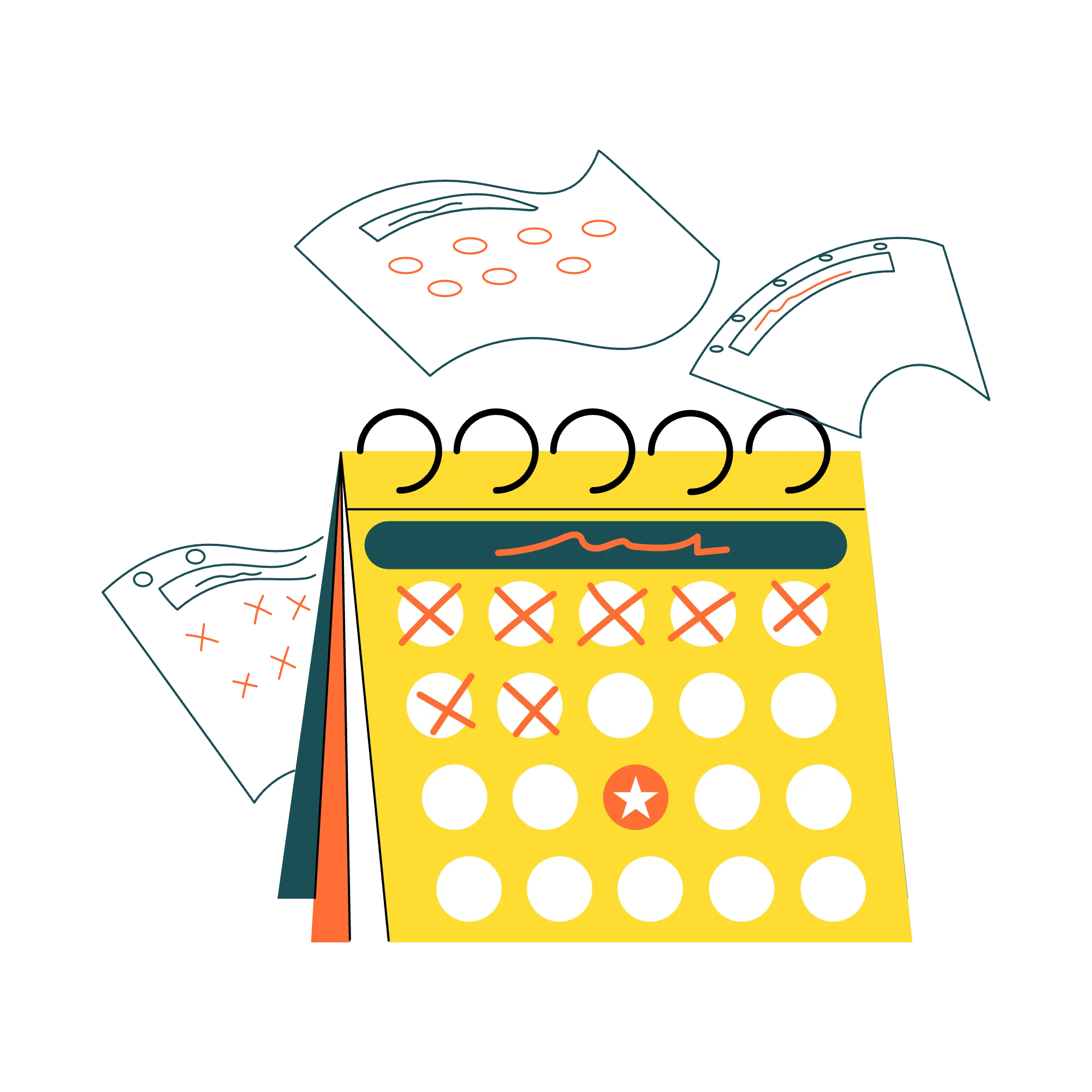1. Verb + outcome
Lead with an action verb and name the value:
Weak: “Submit”
Strong: “Book my strategy call”
2. Specific value hint
Quantify or clarify benefit: “Cut audit prep time 50 %” provokes more clicks than “Learn more”.
3. Friction signal (or its absence)
Reduce perceived risk: “Start free trial no card needed” or “Takes 2 minutes”.
4. Visual contrast
Buttons need to pop. Use a colour not seen elsewhere on the page, sufficient whitespace and a size readable on mobile.
5. Location and repetition
Place the primary CTA above the fold, repeat after each major section, and end with a final nudge. Scrolling heat-maps usually show spikes at those breakpoints.
Copy principles that work in B2B
- First-person framed – “Schedule my audit” outperforms “Schedule your audit”.
- Concrete, not abstract – “Download the 43-point GDPR checklist” beats “See our content”.
- Urgency without hype – “Reserve place for 12 June cohort” feels real; “Act now!!!” feels spammy.
- Risk reduction – “Free until launch” or “Cancel anytime” calms procurement nerves.
Formats across channels
- Landing-page button: primary colour, full-width on mobile.
- Inline text link in a blog: use brackets “Get the CRM scorecard”.
- Display or social image: overlay the CTA text in a high-contrast box.
- Email PS line: “P.S. Ready to see mock-ups? Reply with ‘Design’.”
Match voice to channel formality: an enterprise LinkedIn InMail CTA may read “Discuss your data-retention risks”, while a Slack DM prompt could be “Fancy a 10-min call?”.
Testing and metrics
- CTR (click-through rate) – primary health metric.
- Click-to-lead ratio – ensures the landing experience delivers on CTA promise.
- Scroll depth to CTA – heat-maps reveal if the button sits too low.
- Micro-copy tests – swap verbs, add time cues, include “my” vs “your”.
Run one variable at a time for seven days or 100 conversions, whichever comes first.
Common pitfalls
- Too many CTAs competing on one screen.
- Vague verbs: “Submit”, “Go”, “Click”.
- Low-contrast colour on mobile.
- CTA promises something the landing page does not deliver kills trust fast.
Identify the single next action
List every possible goal white-paper, demo, call and pick one. Multiple equal CTAs confuse both readers and conversion data.
Write three variations using the verb-outcome formula
Example for a marketing audit:
- “Get my audit report”
- “Book my 30-min audit call”
- “Reserve audit slot 2 min form”
Apply design best practice
Choose a standout colour, add 24 px padding, set a mobile-first width, and leave breathing space around the button.
A/B test and iterate
Launch two variants, monitor for statistical lift, keep the winner, write a new challenger. Continuous CTA testing is the cheapest CRO lever available.
Conclusion
A call to action is the smallest copy element with the biggest revenue impact. Make it clear, valuable, and visually distinct; test relentlessly; and let one focused button guide every visitor to the next step in your growth journey.

.webp)



